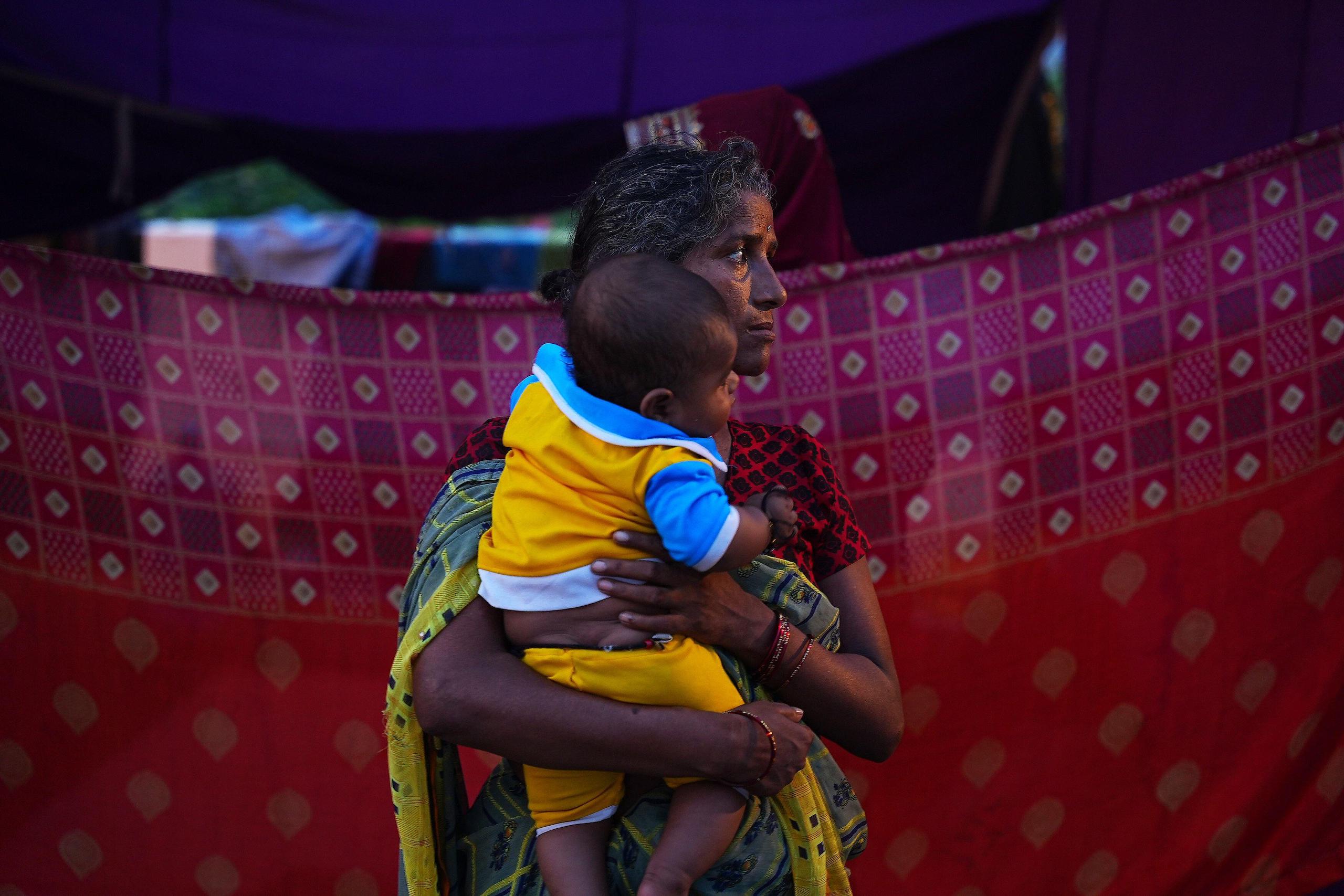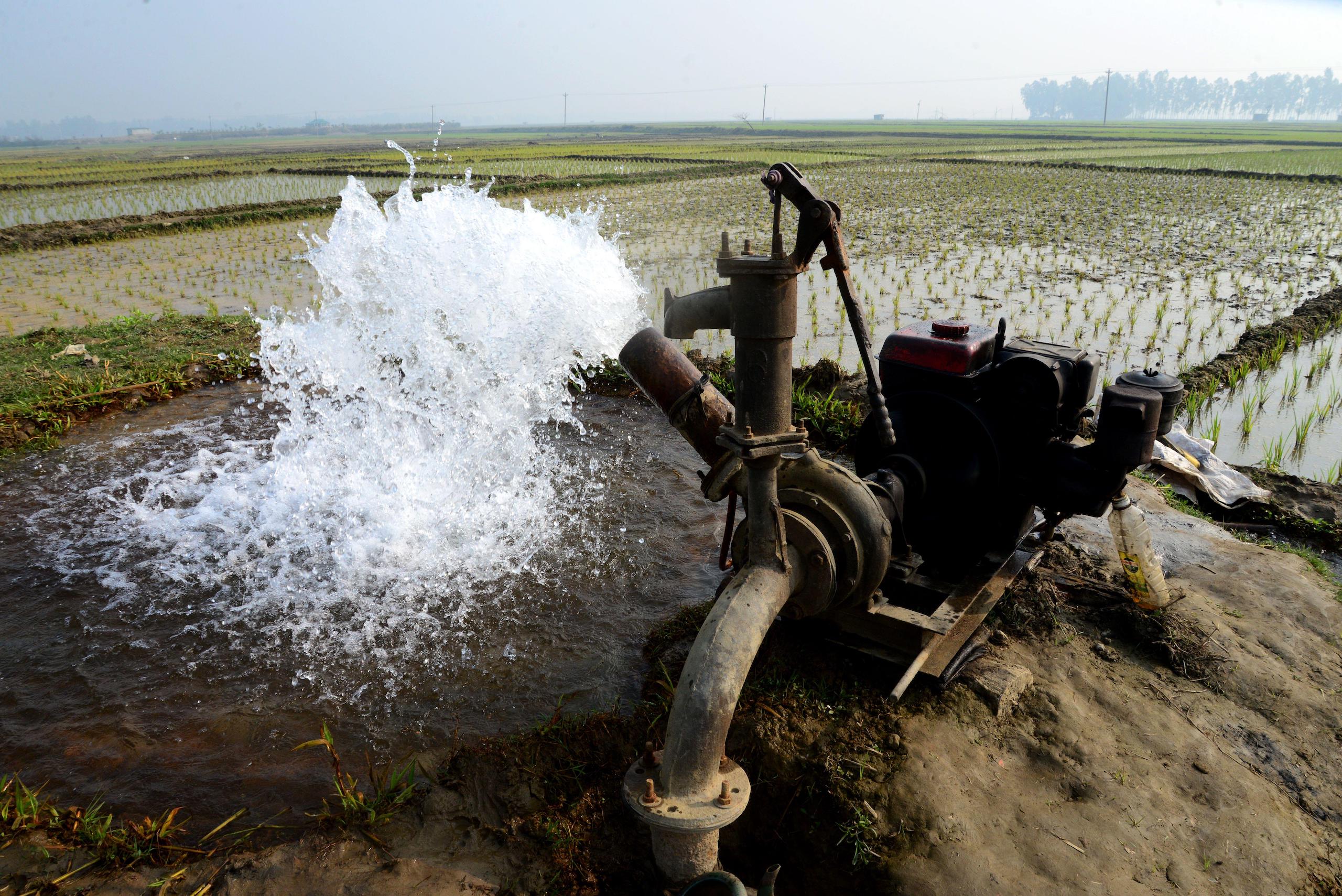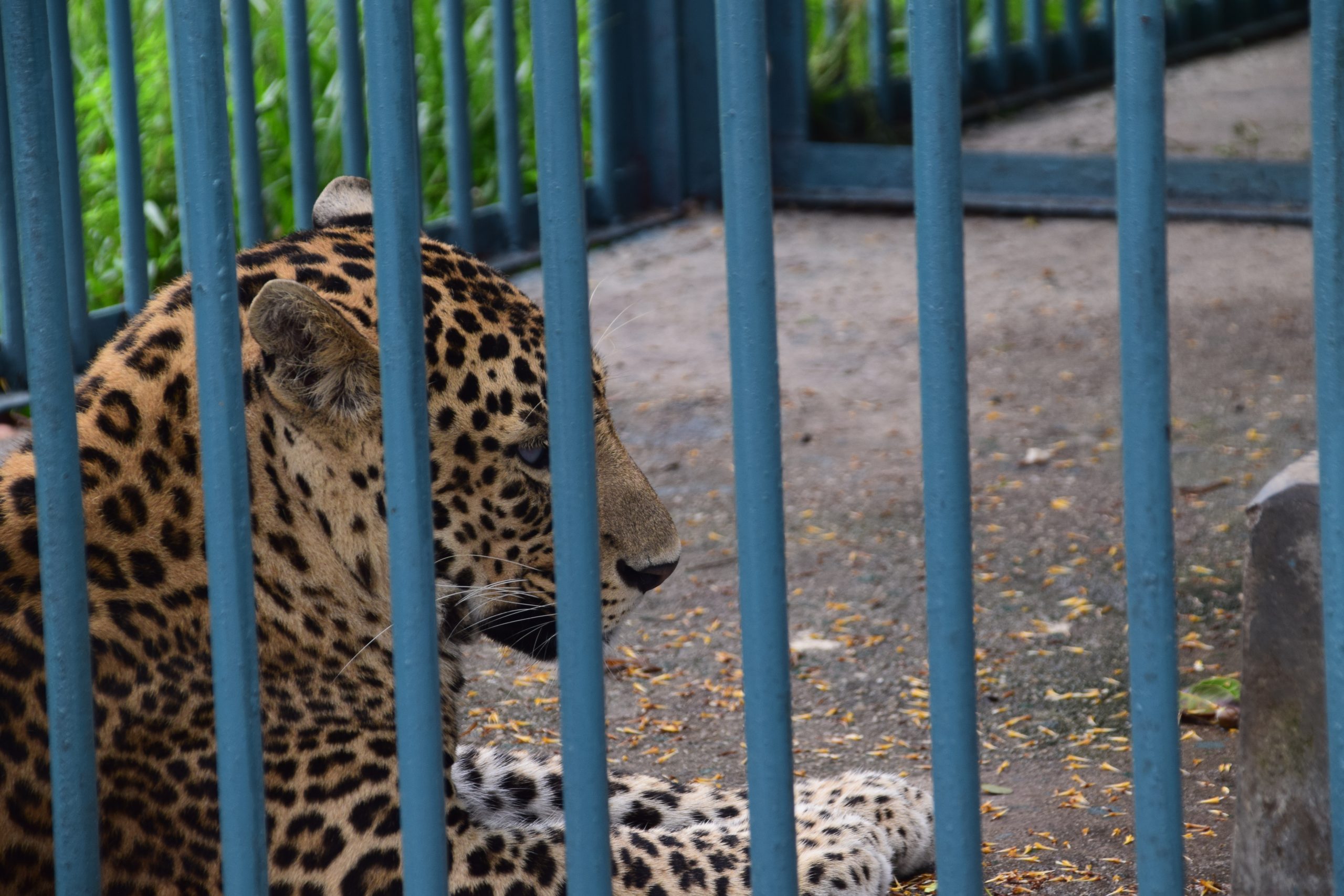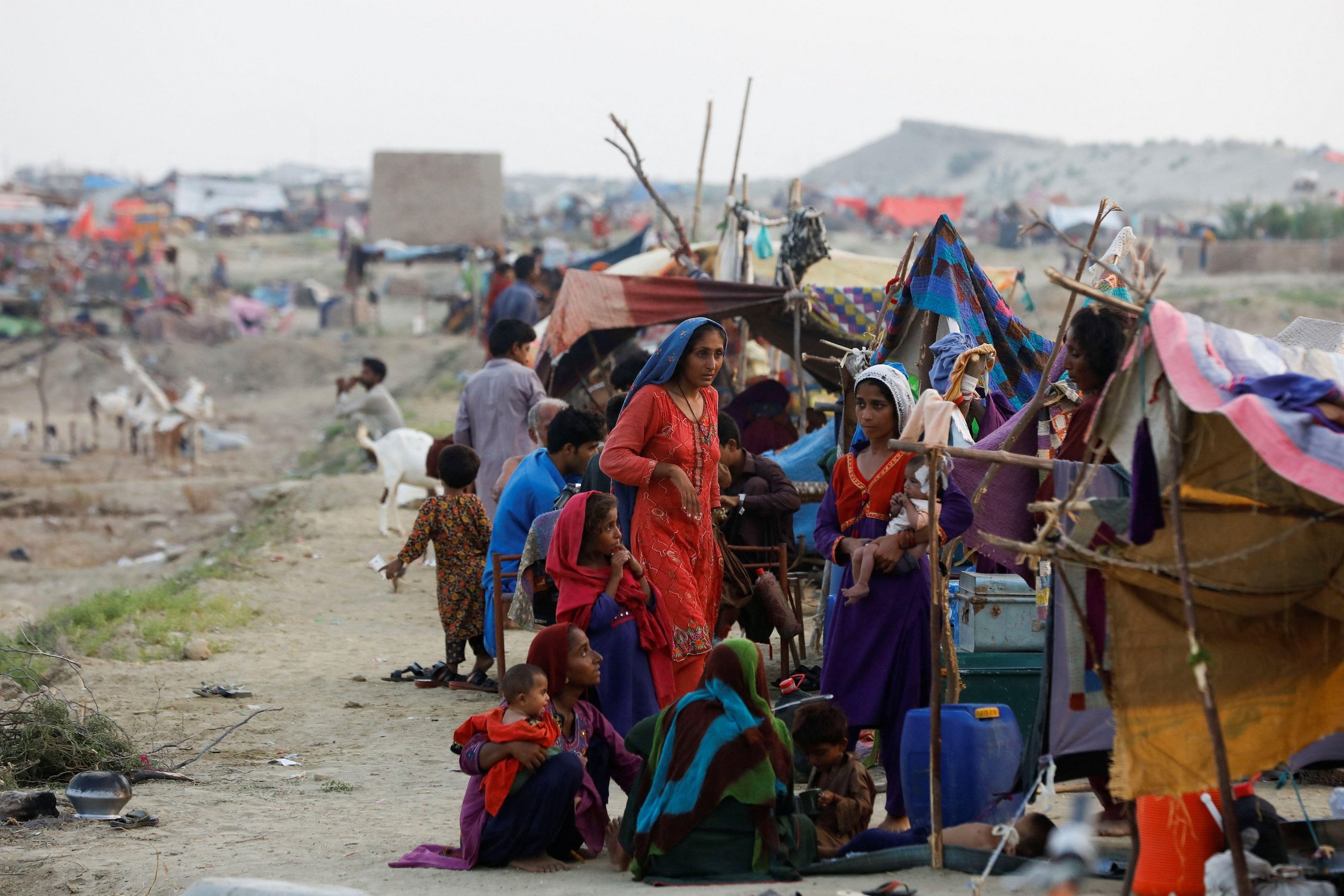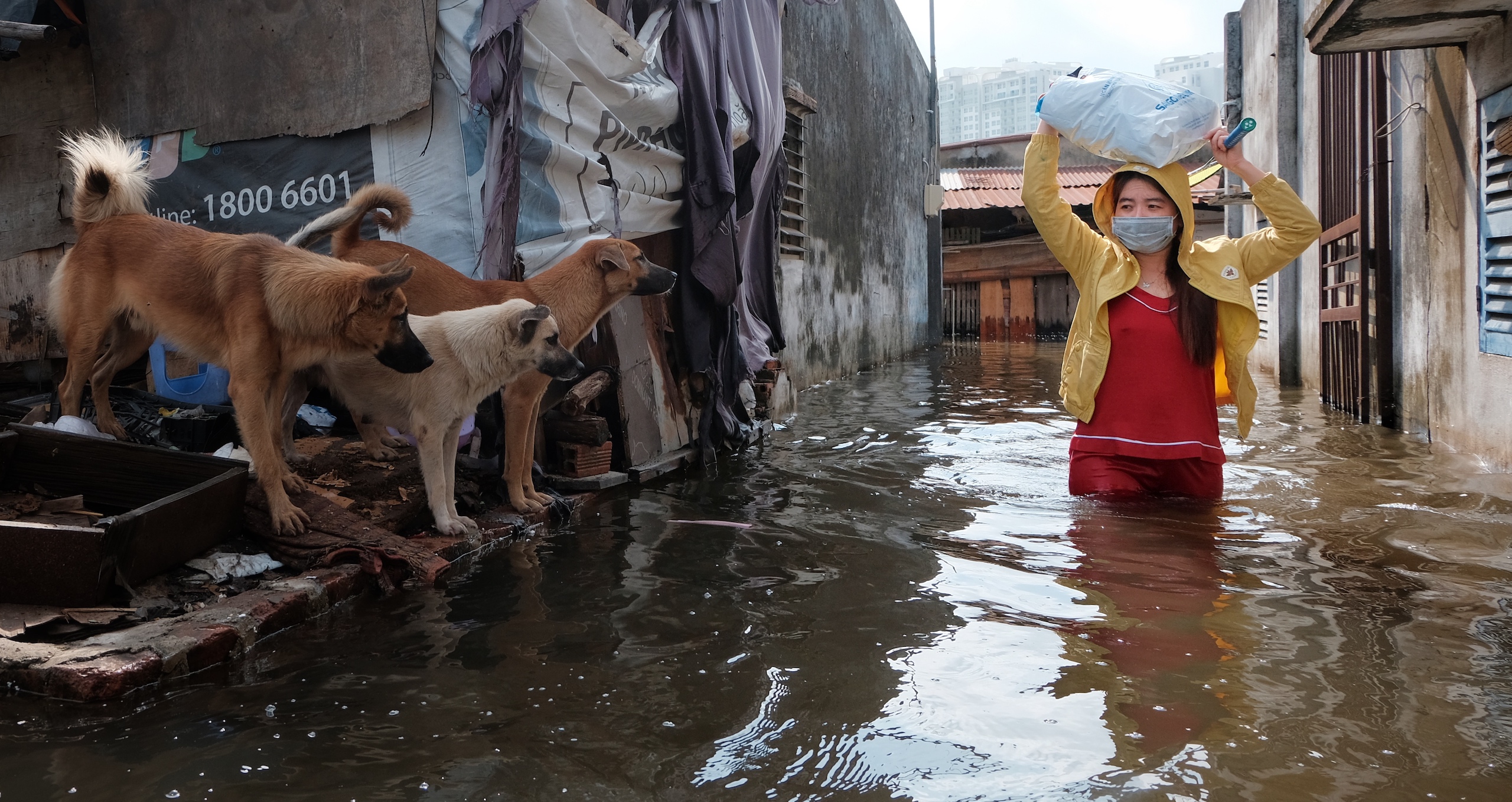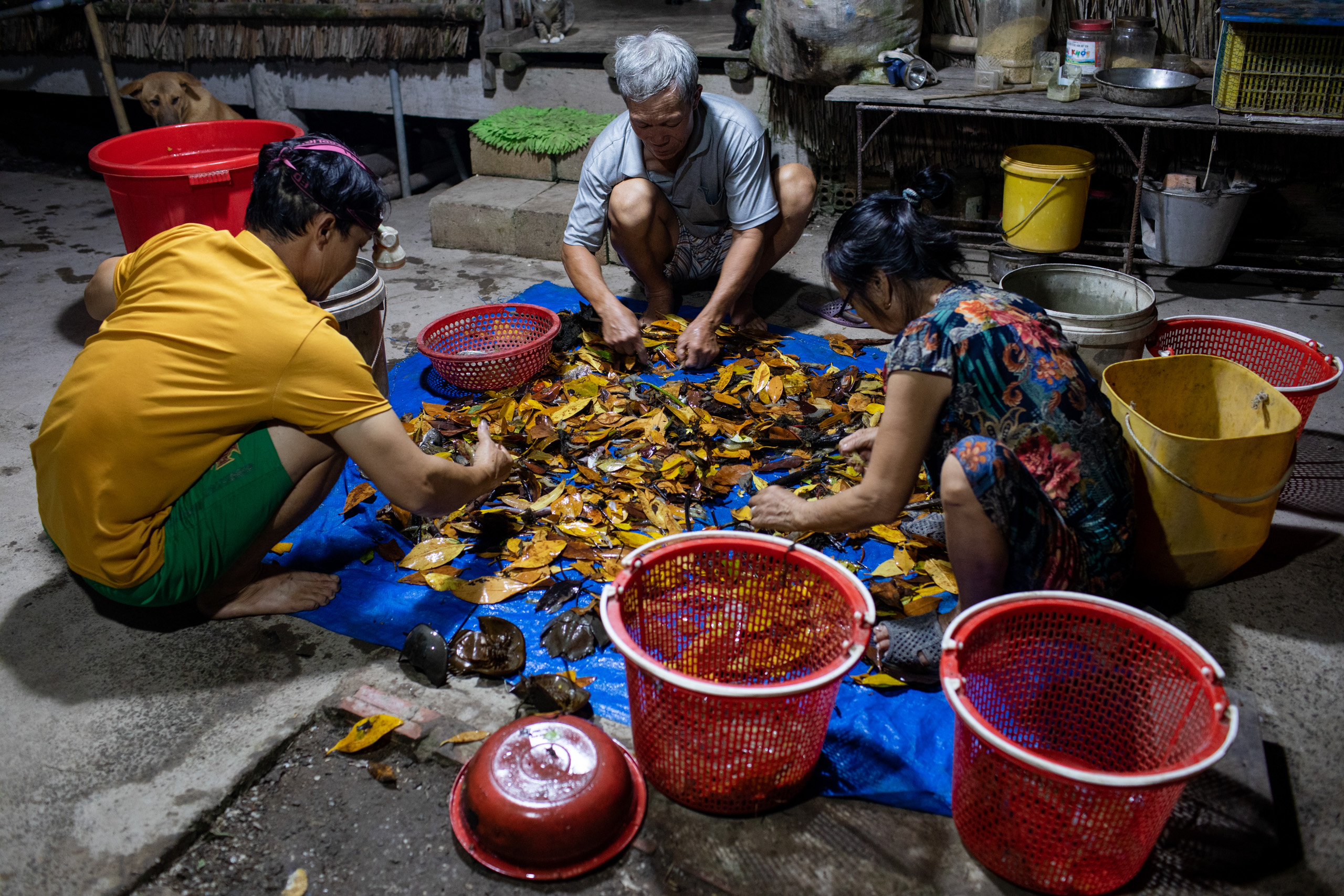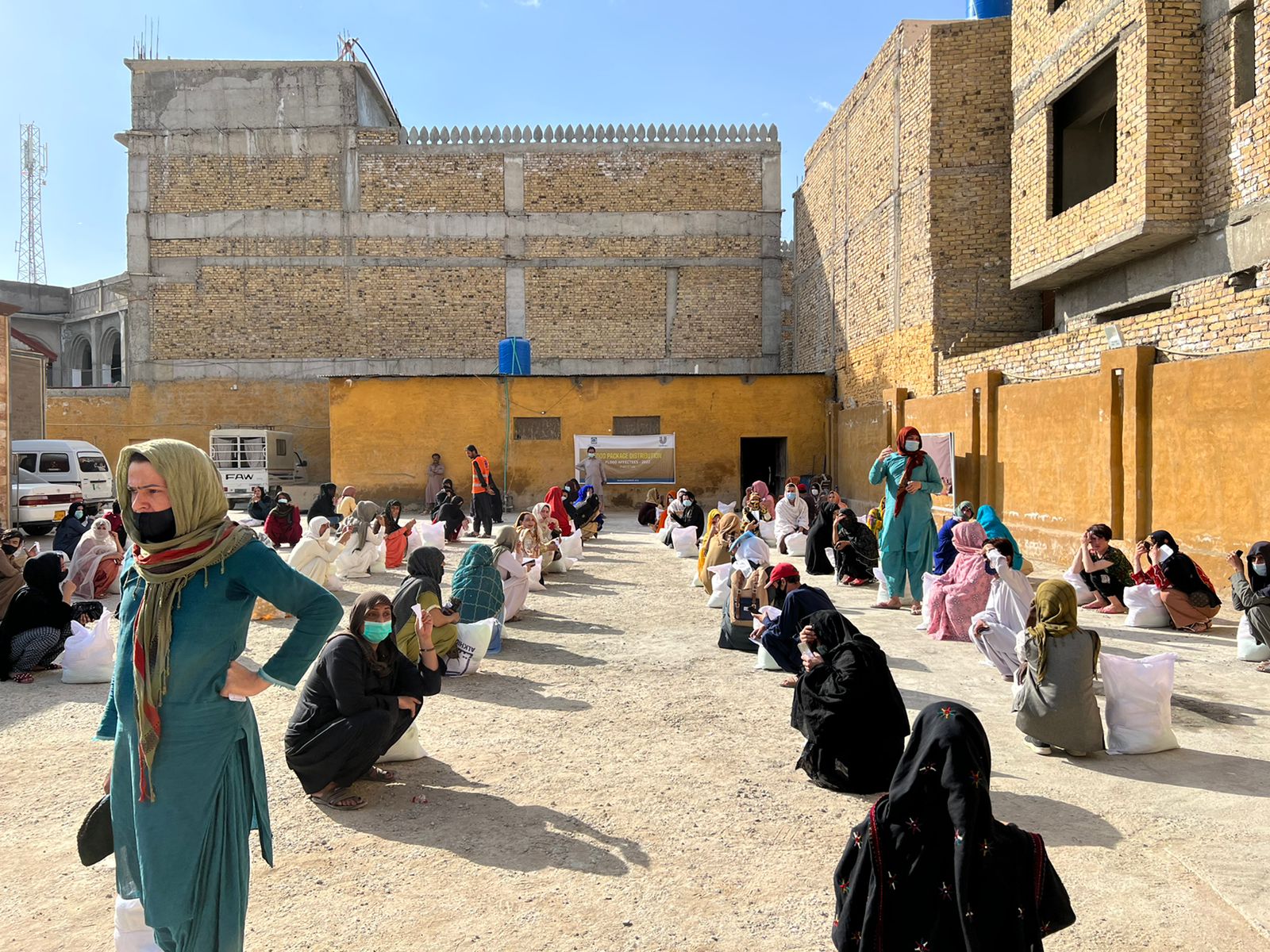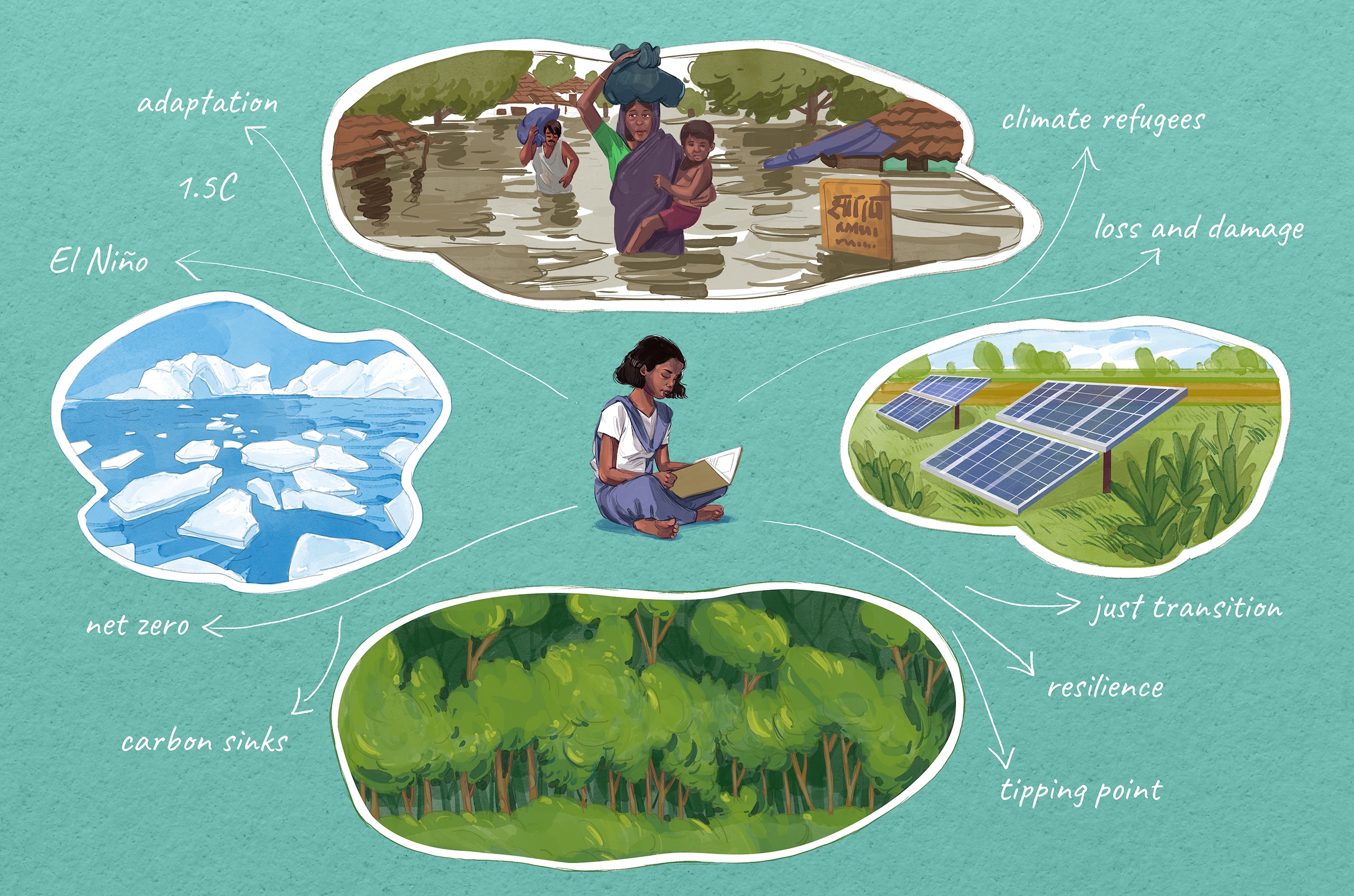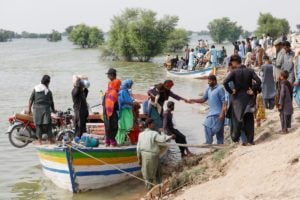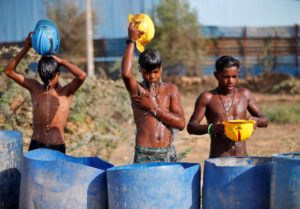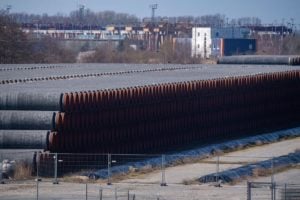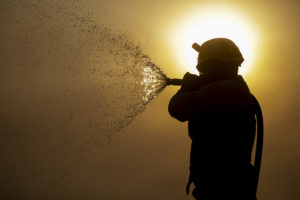‘Water lords’ extort drought-stricken farmers in Bangladesh
Omair Ahmad, managing editor, South Asia
This is a story of both the past and the future. The water-stressed Barind Tract, where about 40% of Bangladesh’s rice is grown, has seen extensive human intervention. Outside the country, some of the waters of the transboundary Ganga and the Teesta rivers are diverted by India before they reach Bangladesh.
The use of deep-water pumps has created a sort of water stability in the region, but has also empowered those who own private pumps, as well as a state water bureaucracy that is insulated from the wants of marginal farmers. The owners of private pumps are both Hindu and Muslim, as are those who suffer, with indigenous and repressed caste groups being the most impacted. Solar pumps – though cleaner – have done nothing to change this dynamic.
The greatest impact of climate change is on water availability, and as the climate crisis deepens, these inequities will become more pronounced. There are no easy, technocratic solutions to the poor and marginalised being deprived of what they need to survive, even if their efforts are what feed the world.
Read the full story here.
Animal deaths in community-run ‘zoos’ in Nepal raise alarm
Ramesh Bhushal, Nepal editor
Nepal’s community forests are an example of best practice in conservation, with more than 22,000 Community Forest Users’ Groups across the country having helped to protect forests. But lately, some of these community groups have also started to establish informal zoos, where they keep animals rescued – or captured – from the forests they manage. Due to a lack of proper training or supervision by government agencies, some of these zoos have turned into a death trap for wild animals.
While standard zoos run by the state are the focus of much debate, issues around these informal ‘mini-zoos’ had been left unreported. The story has highlighted the issue, bringing together details from the field and the voices of several stakeholders.
Read the full story here.
Online panel discussion on the Joshimath disaster
Georgie Campbell, social media officer
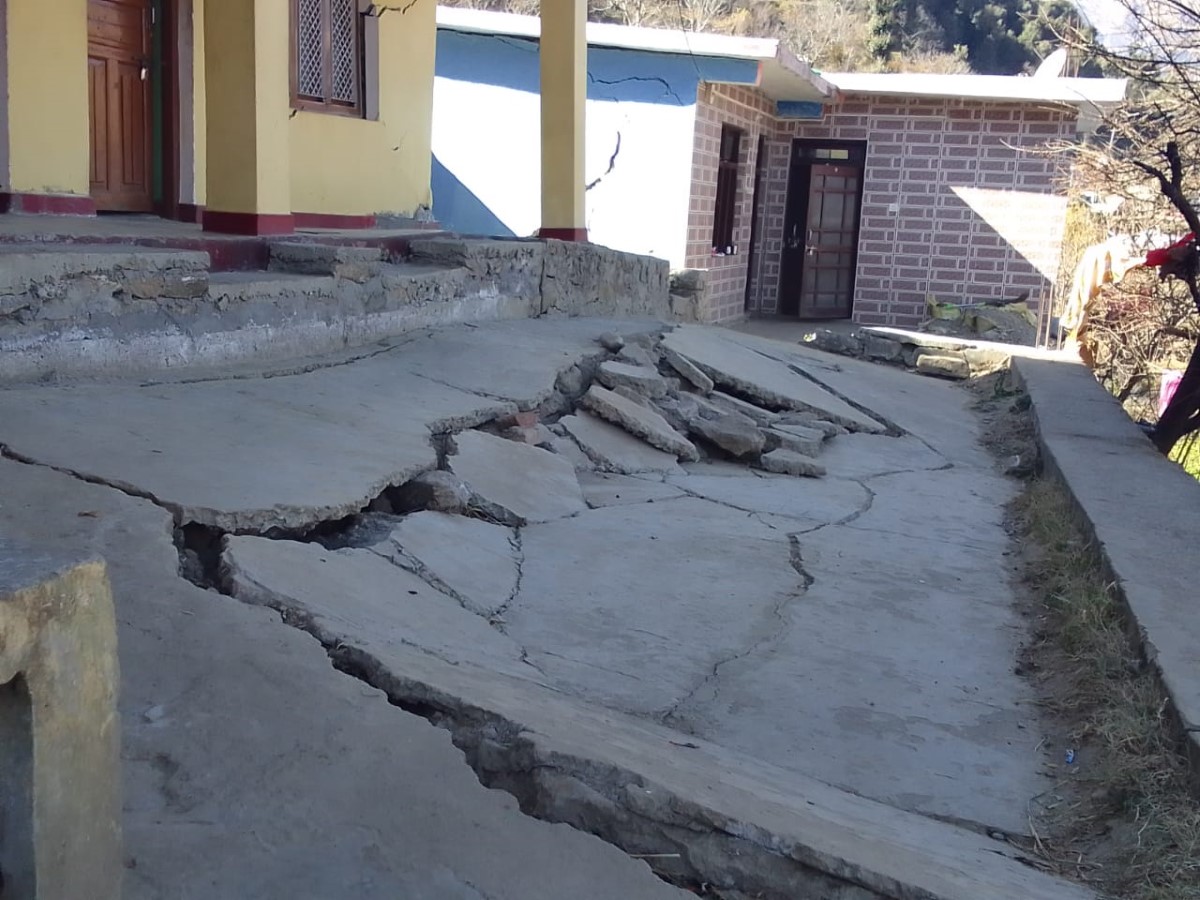
This year, we held some brilliant online panels featuring a wide array of experts. The event I am most proud of is a discussion hosted on our Hindi language Twitter account analysing the Joshimath disaster.
As our editor-at-large Joydeep Gupta explained in an article on The Third Pole, in early January excessive construction and months of ignored warnings escalated land subsidence in the pilgrim town of Joshimath, in the Indian state of Uttarakhand. This caused dangerous cracks to form in hundreds of houses, necessitating the evacuation of thousands of residents. We further explored the topic via a discussion on Twitter Spaces, when Joydeep and our editorial assistant Shalinee Kumari were joined by journalists Varsha Singh and Hridayesh Joshi, both speaking live from Joshimath.
The panel discussed the evacuation, the science and history behind the disaster, and the need to stop rampant construction in the fragile region. Activists from Uttarakhand also participated in the discussion, expressing concerns about the fate of the region and the insufficient consideration given to expert reports. More than 1,000 people tuned in, making this the most-listened Twitter Space on our Hindi account to date.
Listen to the conversation here.
Medical processes hide the true number of Indians dying from extreme heat
Joydeep Gupta, editor-at large
Doctors in India have a problem: they know of cases when extreme heat is worsening health problems to the point of death, but they cannot say so. Heat stress is not accepted as a cause of death by insurance companies or in medical jurisprudence. Heart attack, stroke and acute dysentery are among the causes of death listed on medical certificates, even when the doctor knows that heatstroke has triggered an emergency.
With climate change leading to more days of extreme heat in South Asia, in turn driving more cases of illness and death, this is an issue that needs to be addressed. This detailed report explains why.
Read the full story here.
Lasting toll of multiple climate disasters on Pakistan’s women
Shalinee Kumari, editorial assistant
Like any humanitarian crisis, climate change affects some people and communities disproportionately. On this year’s International Women’s Day, we looked at how the burden of climate disasters falls upon on women.
The report, published in March, explored the prevailing situation in Pakistan’s Sindh province months after huge floods displaced millions of people. Highlighting the multi-layered challenges faced by women, it finds that women across the region were confronted with both a shortage of resources at home, where they are responsible for their household, childcare and the elderly, as well as health issues caused by compromised sanitation in the aftermath of the floods.
Experts interviewed for the story pointed out how in situations where women’s needs are the least prioritised, women suffer more than men due to a lack of equal access to resources that would help them better cope with climate-related disasters.
Read the full story here.
Poorest districts worst affected in Ho Chi Minh City floods
Neil Simpson, assistant editor
In 2021, the Intergovernmental Panel on Climate Change stated that some climate impacts are almost certainly inevitable and irreversible. One of these impacts is expanding oceans: no matter what humanity does about greenhouse gas emissions from today onwards, the global scientific consensus is that the seas will rise.
For many, this news is already lapping at their doorsteps, including the residents of Ho Chi Minh City in southern Vietnam. In this wide-ranging article, Ho Chi Minh City-based journalist Nhung Nguyen explores this global issue through the lens of precise locality: the city’s historic use of makeshift wells that is causing subsidence; the newcomers who find themselves living in the most flood-prone districts; and the motorbike taxi driver who cannot earn a living when the floods arrive.
Read the full story here.
Mekong Delta shrimp farmers’ enthusiasm for working with mangroves is waning
Ash Tan, assistant editor
This in-depth story explores how a programme that sounds like a winner in theory – replanting lost mangroves in the Mekong Delta to create habitat for high-value organic shrimp – has met with significant issues.
In the story, we hear from shrimp farmers themselves, who understand the importance of restoring mangroves as a carbon sink and as a buffer to extreme weather driven by climate change, but complain of poor yields and low prices for their organic shrimp. The integrated mangrove-shrimp farming model is now on ‘shaky ground’ in terms of support from farmers, the report finds.
As governments and organisations worldwide roll out programmes aimed at adapting to the effects of climate change, it is a timely reminder for decision-makers to continually listen to participants and local communities. Stories like these show that such conversations simply aren’t happening enough.
Read the full story here.
Pakistan’s trans community battles climate catastrophe and exclusion
Aron White, Asia Pacific editor
This article is a sensitively reported exploration of how climate change can intersect with existing vulnerabilities and inequities. It shines a light on how trans people in Pakistan – who face widespread discrimination – have faced major barriers in accessing disaster relief due to difficulties in obtaining official ID.
When we were pitched this story, we were struck by the stories of trans people who, having already faced rejection from their families and wider communities, lost entire livelihoods in the floods of 2022 and were unable to access support and compensation. But we were also inspired by stories of leadership and determination from activists in the community who are pushing for policy changes that would transform disaster relief for trans people in Pakistan.
Crucially, the people we hear from in this article are not external observers commenting on the problems faced by trans people, but members of the community themselves, talking about their lived experience and their determination to make a change.
Read the full story here.
Climate change glossary: the terms you need to understand, explained
Farahnaz Zahidi, Pakistan editor
My favourite article published on The Third Pole in 2023 was this climate change glossary, published simultaneously in English, Hindi, Urdu, Bengali and Nepali. The feature represents a major joint effort between not just our editors, but our translators too.
As the need of the hour, this glossary got a massive positive response. After publication in Urdu, it was translated into Sindhi by an academic, which shows the need for this kind of resource in a range of South Asian languages. As a living document, it will continue to be updated as new terminology emerges and evolves in the field of climate change.
Read the full story here.
